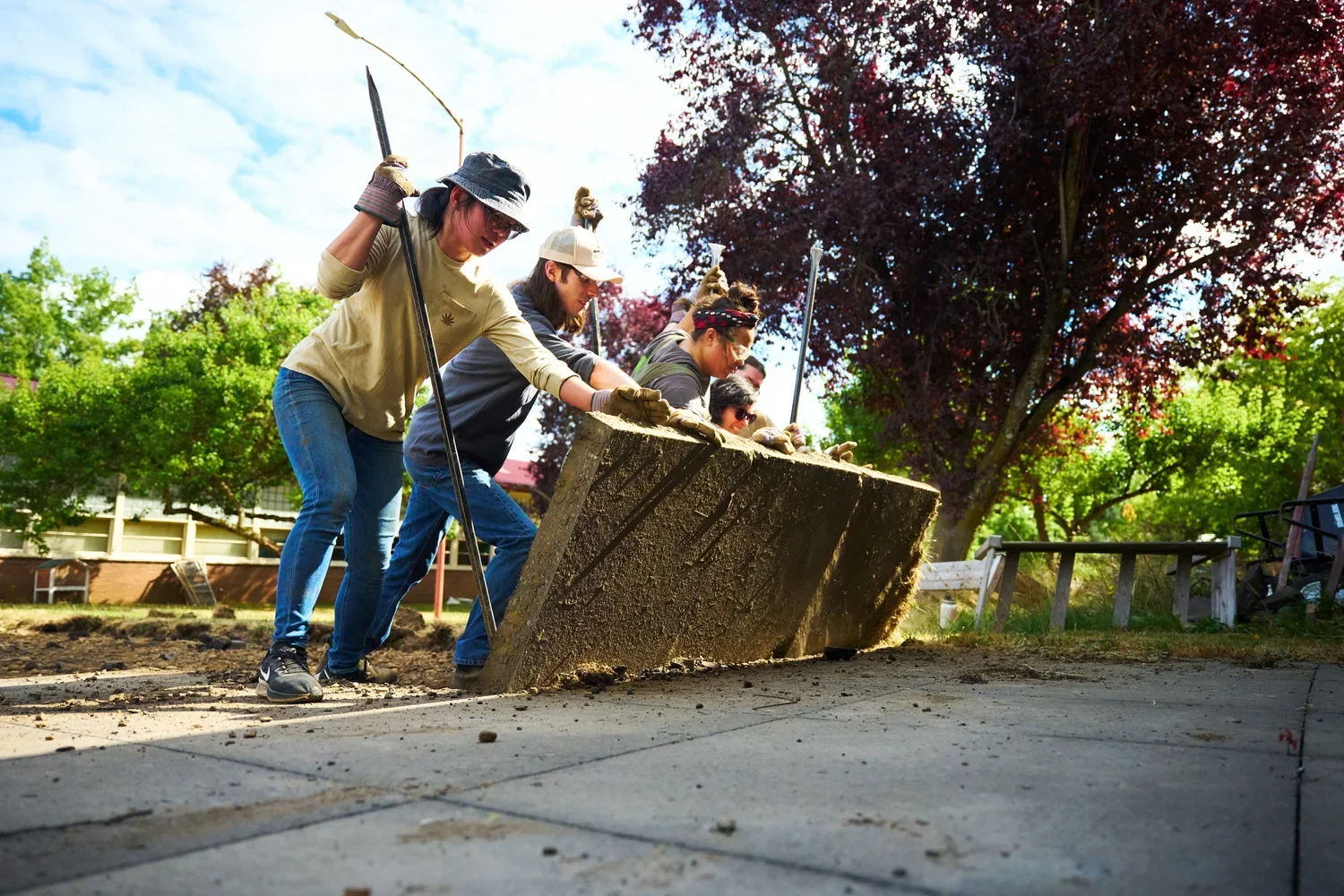Helping urban communities to reconnect with natural systems.
✍️Tom Barton
Listeners of the Blindboy Podcast will be familiar with the ongoing saga of the “bird shit district”. In recent weeks, the Irish artist and podcaster has been drawing attention to the problem of starling droppings in Bedford Row, a busy pedestrianised street in Limerick City.
Thanks to Blindboy’s millions-strong global audience, Limerick City Council has been forced to take notice and step up their game. However, their response hasn’t exactly been groundbreaking. They’re simply cleaning the street more thoroughly and regularly. But this, argues Blindboy, hasn’t worked and won’t work, because the starlings aren’t the problem; the streets are.
The starlings in question have been roosting along the banks of Limerick’s River Shannon for hundreds – if not thousands – of years. Their droppings were once a source of vital nutrients for the landscape in which they lived. It wasn’t until this landscape was paved over that the birds and their droppings became a problem.
| “It wasn’t until this landscape was paved over that the starlings and their droppings became a problem.”
As well as being an amusing public spectacle, the “bird shit district” saga also points to a much larger problem facing urban spaces around the world; there’s too much grey and not enough green.
Since 1985, global “impervious surface area” (roads, pavement, concrete, roofs, etc.) has more than doubled — from half a million square kilometres in 1985 to over a million square kilometres in 2020. For reference, that’s an area larger than France, Germany, Belgium and the Netherlands combined!
The main problem with these impervious surfaces is that they disrupt natural systems. In Limerick, impervious surfaces cut-off the complex relationship between Starlings and their landscape that had evolved over thousands of years. Similar dynamics are playing out all over the world.
Impervious surfaces can also block-off natural drainage systems, making floods more frequent and severe. They also trap heat and can turn cities into giant ovens during heatwaves. As climate change accelerates and extreme weather events become more frequent, the effects of the disconnect between people and natural systems will only get worse.
Many studies have also demonstrated strong links between daily access to green spaces and improved mental health. In a famous 1984 experiment known as “Ulrich’s Hospital Window”, patients recovering from surgery were matched by demographic and medical variables, but some patients had views of trees while others had views of a brick wall. The study found that patients with natural views had shorter hospital stays, required fewer painkillers, and had fewer post-operative complications. Access to green space, in other words, is good for the mind, body and soul!
| “Psychologists have demonstrated strong links between daily access to green spaces and improved mental health.”
The need for our cities to work with nature, rather than against it, is clear. Yet city councils and local governments around the world have largely failed to act. Fortunately, a small nonprofit from Portland, Oregon has been taking matters into its own hands by pushing a radical idea: what if we simply tore the pavement up?
Founded in 2007, Depave was born out of frustration with the endless sprawl of asphalt in American cities and a desire to “free the soil.” Its projects begin in the most unremarkable of places: a disused car park behind a church, an unused school playground, a derelict alleyway. Teams of volunteers arrive with sledgehammers, shovels, and wheelbarrows. In a matter of hours, a surface that has been sealed for decades is broken apart, dug out, and replaced with something alive—native gardens, vegetable plots, permeable walkways, even miniature forests.
Spaces that once trapped heat begin to cool the neighbourhood. Where it once pooled and flooded, rain water is absorbed into the ground. Children who once played on hard, dangerous surfaces now have grass under their feet. Birds and pollinators return. The relationship between people, place and nature is restored.
| “The relationship between people, place and nature is restored.”
In the years since its founding, Depave has removed more than 200,000 square feet of concrete and created over 70 green spaces across the United States. Thousands of people have taken part in its volunteer programmes, learning not just how to swing sledgehammers or plant trees, but also how to completely rethink what is possible with urban land.
Unfortunately, there’s only so much volunteers can do. “Depaving” cities around the world will require billions in investment, which has to come from councils and local government bodies. The way forward may not begin with sweeping masterplans or billion-euro projects, but with something far simpler: a hammer, a patch of soil, and a community willing to reclaim the ground beneath their feet. Depave don’t have to wait for notoriously slow beurocracy and red tape. Every little bit they do puts more and more pressure on local bodies to recognise the benefits.
Our cities are too hard, too sealed, too grey. The smell on Bedford Row is not a quirk of urban life but a symptom of a deeper problem: cities built to repel nature rather than live alongside it. Thankfully, initiatives like Depave show us that change is not just possible, but actually already underway.
The real question is whether governments and city planners will recognise this. Will they keep scrubbing the pavements—or will they start tearing them up?





